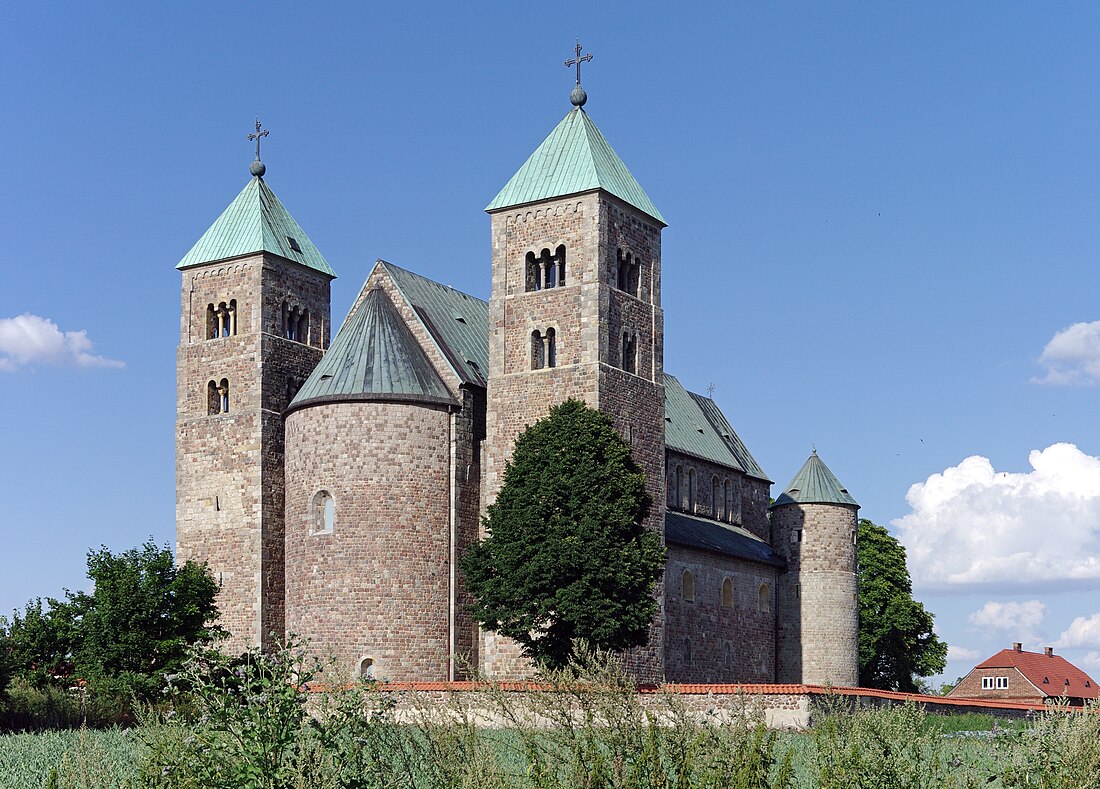Top Qs
Timeline
Chat
Perspective
Romanesque architecture in Poland
From Wikipedia, the free encyclopedia
Remove ads
Romanesque architecture in Poland dates back to the 11th century to the reign of Casimir I the Restorer. It was developed in and ranging approximately from the 11th century until well into the half 13th century and it was succeeded by Polish Gothic architecture.
This article needs additional citations for verification. (June 2015) |
Romanesque style in Poland was preceded by Pre-Romanesque architecture of the early Polish state. Its prime foundations were the Wawel Cathedral in Kraków, the Gniezno Cathedral and the Poznań Cathedral[1] (later re-built in different styles). Polish Romanesque architecture was influenced by the Polish Pre-Romanesque style. Most of Romanesque buildings in Poland can be found in Greater Poland, Kuyavia, Lower Silesia and Lesser Poland regions. Many Polish Romanesque buildings represent the characteristic Brick Romanesque style due to limited stone resources. Majority of these buildings are churches, rotundas and chapels. Most significant Polish Romanesque buildings include the Collegiate church in Tum, St. Nicholas Church in Wysocice, St. Peter and Paul-Collegiate in Kruszwica and the Saint Nicholas rotunda church in Cieszyn.
Remove ads
Historic Monuments of Poland
A number of Romanesque structures are listed as Historic Monuments of Poland, including:
- Abbey Church, Czerwińsk nad Wisłą[2]
- Mogiła Abbey in Kraków[3]
- Saint Procopius church as part of the Norbertine monastery complex in Strzelno[4]
- Sulejów Abbey[5]
- Tum Collegiate Church[6]
- Romanesque-Gothic Saint George church in Ziębice[7]
Gallery
- St. Nicholas Church, Wysocice, Lesser Poland
- St. Peter and Paul-Collegiate, Kruszwica, Kuyavia
- St Martin's Collegiate Church, Opatów, Lesser Poland
- Holy Name of Mary church, Inowrocław, Kuyavia
- St. Thomas of Canterbury church, Sulejów Abbey
- Saints John and Catherine church, Świerzawa, Lower Silesia
- Church of St. John, Siewierz, Lesser Poland
- St. Andrew's Church, Kraków, Lesser Poland
- Saint Giles church, Wrocław, Lower Silesia
Remove ads
References
Wikiwand - on
Seamless Wikipedia browsing. On steroids.
Remove ads
















